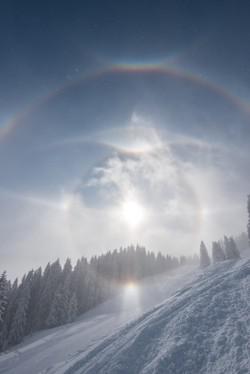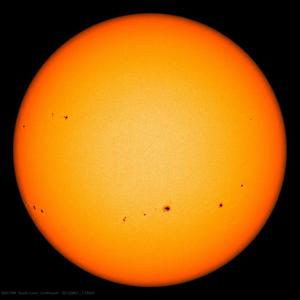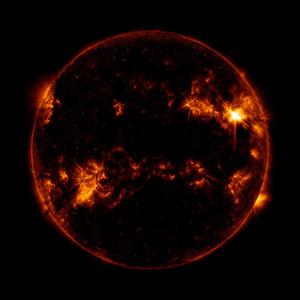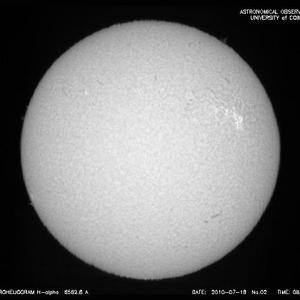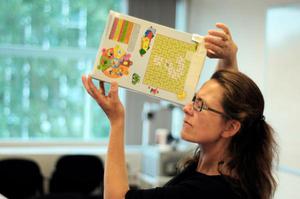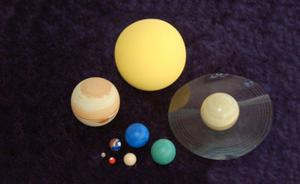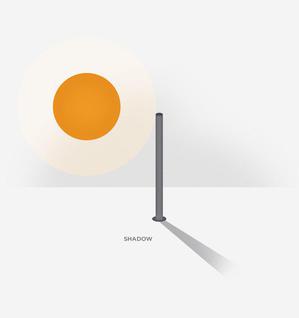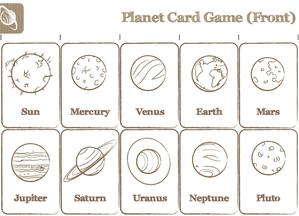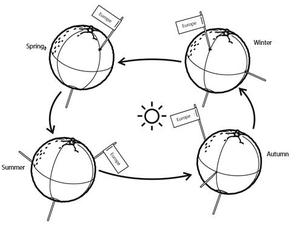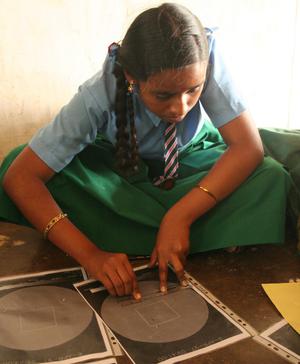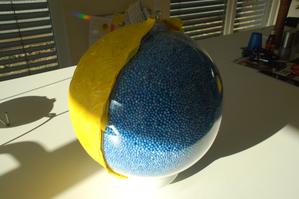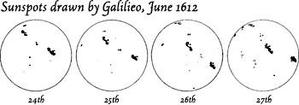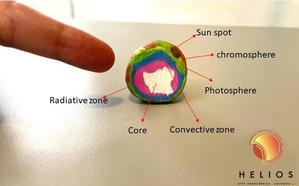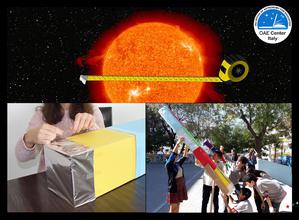Glossary term: Soleil
Description: Le Soleil est l'étoile la plus proche de la Terre. Pour les astronomes, il s'agit d'une étoile de type "G2V". Cette désignation signifie que le Soleil est encore dans sa prèmiere phase, plutôt stable, avec une température de surface ("température effective") de 5800 kelvins, qui lui donne sa couleur caractéristique. La luminosité des étoiles varie de plus de 1000 fois celle du Soleil à environ 1000 fois plus faible, mais les plus brillantes sont relativement rares : le Soleil est plus brillant (et plus lourd) que la plupart (peut-être quelque 85 %) des étoiles de la Galaxie.
Pour les astronomes, le Soleil est intéressant parce qu'en raison de sa proximité, sa surface peut être observée de manière plus détaillée, ce qui permet d'étudier des structures et des phénomènes. Par exemple, l'activité solaire, qui est liée aux champs magnétiques du Soleil : taches solaires (zones plus froides), éruptions (éclairs lumineux de courte durée) et même éjections de masse coronale (particules chargées électriquement projetées par le Soleil). Les physiciens ont également détecté des particules élémentaires connues sous le nom de neutrinos provenant du noyau du Soleil, ce qui constitue une preuve directe des processus de fusion nucléaire. L'élément hélium a été détecté pour la première fois dans le spectre solaire, d'où son nom, qui vient d'Hélios (le dieu du Soleil dans la mythologie grecque).
Related Terms:
- Main Sequence
- Nuclear Fusion
- Solar Flare
- Star
- Tache solaire
- Température effective
- Magnetic Field
- Neutrino
- Coronal Mass Ejection (CME)
See this term in other languages
Term and definition status: The original definition of this term in English have been approved by a research astronomer and a teacher The translation of this term and its definition is still awaiting approval
The OAE Multilingual Glossary is a project of the IAU Office of Astronomy for Education (OAE) in collaboration with the IAU Office of Astronomy Outreach (OAO). The terms and definitions were chosen, written and reviewed by a collective effort from the OAE, the OAE Centers and Nodes, the OAE National Astronomy Education Coordinators (NAECs) and other volunteers. You can find a full list of credits here. All glossary terms and their definitions are released under a Creative Commons CC BY-4.0 license and should be credited to "IAU OAE".
Related Media
Winter Haloes, by Thomas Gigl, Germany
Credit: Thomas Gigl/IAU OAE
License: CC-BY-4.0 Creative Commons Attribution 4.0 International (CC BY 4.0) icons
Sunspots
Credit: NASA/SDO/HMI credit link
License: PD Public Domain icons
Éruption solaire
Credit: NASA/SDO credit link
License: PD Public Domain icons
Related Activities
Measure the Solar Diameter
astroEDU educational activity (links to astroEDU website) Description: Hands-on activity to measure the Sun by using household materials.License: CC-BY-4.0 Creative Commons Attribution 4.0 International (CC BY 4.0) icons
Tags: Hands-on , Scales , Observing , Measurement Age Ranges: 12-14 , 14-16 , 16-19 , 19+ Education Level: Middle School Areas of Learning: Social Research Costs: Low Cost Group Size: Group Skills: Communicating information , Constructing explanations , Using mathematics and computational thinkingCounting Sunspots
astroEDU educational activity (links to astroEDU website) Description: Counting the Sunspots using real solar images and data.License: CC-BY-4.0 Creative Commons Attribution 4.0 International (CC BY 4.0) icons
Tags: Hands-on , Sunspots , Data analysis Age Ranges: 16-19 Areas of Learning: Observation based Costs: Low Cost Duration: 1 hour Group Size: Group Skills: Analysing and interpreting data , Constructing explanations , Using mathematics and computational thinkingMeet Our Neighbours: Sun
astroEDU educational activity (links to astroEDU website) Description: Explore the tactile version of our star; the Sun with household materials.License: CC-BY-4.0 Creative Commons Attribution 4.0 International (CC BY 4.0) icons
Tags: Hands-on , Model , Sunspots , Visually Impaired , Tactile Age Ranges: 6-8 , 8-10 , 10-12 Education Level: Middle School , Primary , Secondary Areas of Learning: Interactive Lecture , Modelling Costs: Low Cost Duration: 1 hour Group Size: Group Skills: Analysing and interpreting data , Developing and using modelsBuild a Safe Sun Viewer
astroEDU educational activity (links to astroEDU website) Description: Build a safe Sun viewer using cheap household items and learn why it is dangerous to look directly at the Sun, even briefly.License: CC-BY-4.0 Creative Commons Attribution 4.0 International (CC BY 4.0) icons
Tags: Hands-on , Safety Age Ranges: 6-8 , 8-10 , 10-12 Education Level: Primary , Secondary Areas of Learning: Modelling , Observation based Costs: Low Cost Group Size: Group Skills: Planning and carrying out investigationsSolar System Model
astroEDU educational activity (links to astroEDU website) Description: Make a model of the Solar System planets using household materials.License: CC-BY-4.0 Creative Commons Attribution 4.0 International (CC BY 4.0) icons
Tags: Hands-on , Model , Planets Age Ranges: 4-6 , 6-8 , 8-10 Education Level: Pre-school , Primary Areas of Learning: Modelling Costs: Low Cost Duration: 30 mins Group Size: Group Skills: Analysing and interpreting data , Asking questions , Communicating information , Developing and using modelsSun’s Shadow
astroEDU educational activity (links to astroEDU website) Description: Why is the Sun's shadow so important?License: CC-BY-4.0 Creative Commons Attribution 4.0 International (CC BY 4.0) icons
Tags: Hands-on , Shadows Age Ranges: 6-8 , 8-10 , 10-12 , 12-14 , 14-16 Education Level: Informal , Middle School , Primary , Secondary Areas of Learning: Observation based , Social Research Costs: Medium Cost Duration: 1 day Group Size: Group Skills: Asking questions , Communicating information , Constructing explanations , Engaging in argument from evidenceSun, Earth and Moon Model
astroEDU educational activity (links to astroEDU website) Description: Build an Earth-Moon-Sun mobile to learn about how they orbit.License: CC-BY-4.0 Creative Commons Attribution 4.0 International (CC BY 4.0) icons
Tags: Hands-on , Model Age Ranges: 8-10 Education Level: Primary Areas of Learning: Game-mediated learning , Modelling , Social Research Costs: Medium Cost Duration: 1 hour 30 mins Group Size: Group Skills: Asking questions , Communicating information , Developing and using modelsKnow Your Planets
astroEDU educational activity (links to astroEDU website) Description: Play a game of card and learn about the Sun and planets.License: CC-BY-4.0 Creative Commons Attribution 4.0 International (CC BY 4.0) icons
Tags: Game , Planets Age Ranges: 4-6 , 6-8 , 8-10 Education Level: Pre-school , Primary Areas of Learning: Game-mediated learning , Social Research Costs: Low Cost Duration: 1 hour Group Size: Group Skills: Analysing and interpreting data , Asking questions , Communicating informationSeasons Around the World
astroEDU educational activity (links to astroEDU website) Description: Demonstrate the seasons on Earth using a model.License: CC-BY-4.0 Creative Commons Attribution 4.0 International (CC BY 4.0) icons
Tags: Hands-on , Model Age Ranges: 6-8 , 8-10 , 10-12 Education Level: Middle School , Primary Areas of Learning: Modelling , Social Research Costs: Medium Cost Duration: 45 mins Group Size: Group Skills: Analysing and interpreting data , Asking questions , Constructing explanations , Developing and using models , Planning and carrying out investigationsNavigate like a Viking – Use the Sun, not your phone!
astroEDU educational activity (links to astroEDU website) Description: Learn how the Vikings used the sky to navigate at sea with a hands-on activity!License: CC-BY-4.0 Creative Commons Attribution 4.0 International (CC BY 4.0) icons
Tags: History , Geography , Maps , Coordinates , Celestial navigation Age Ranges: 12-14 , 14-16 Education Level: Middle School Areas of Learning: Discussion Groups , Modelling , Social Research Costs: Medium Cost Duration: 1 hour 30 mins Group Size: Group Skills: Analysing and interpreting data , Asking questions , Communicating information , Developing and using models , Planning and carrying out investigations , Using mathematics and computational thinkingMeasure the Sun's Rotation Period
astroEDU educational activity (links to astroEDU website) Description: Find out the Sun’s rotation period, applying the simple equation of average speed to a real astronomical case.License: CC-BY-4.0 Creative Commons Attribution 4.0 International (CC BY 4.0) icons
Tags: Hands-on , History , Experiment , Galileo , average speed Age Ranges: 16-19 Education Level: Secondary Areas of Learning: Social Research Costs: Low Cost Duration: 1 hour 30 mins Group Size: Group Skills: Analysing and interpreting data , Engaging in argument from evidence , Planning and carrying out investigations , Using mathematics and computational thinkingOne Million Earths inside our Sun
astroEDU educational activity (links to astroEDU website) Description: Learn how to build a model of the Sun...which can fit nearly 1 million little Earth balls!License: CC-BY-4.0 Creative Commons Attribution 4.0 International (CC BY 4.0) icons
Tags: Hands-on , Model , Scales , Distances , Dimension , Relative sizes Age Ranges: 4-6 , 6-8 , 8-10 , 10-12 , 12-14 , 14-16 , 16-19 , 19+ Education Level: Informal , Middle School , Other , Pre-school , Primary , Secondary , University Areas of Learning: Guided-discovery learning , Modelling , Problem-solving Costs: Medium Cost Duration: 30 mins Group Size: Group Skills: Analysing and interpreting data , Asking questions , Communicating information , Developing and using models , Using mathematics and computational thinkingIs the Sun rotating? Follow the sunspots!
astroEDU educational activity (links to astroEDU website) Description: Like a "modern" Galileo, use true astronomical satellite observations to discover if the Sun (and other celestial objects) are rotating!License: CC-BY-4.0 Creative Commons Attribution 4.0 International (CC BY 4.0) icons
Tags: Hands-on , History , Experiment , Galileo Age Ranges: 12-14 , 14-16 , 16-19 Education Level: Middle School , Secondary Areas of Learning: Social Research Costs: Low Cost Duration: 1 hour Group Size: Group Skills: Analysing and interpreting data , Planning and carrying out investigationsMake your own Sun!
astroEDU educational activity (links to astroEDU website) Description: Let's build a model of the Sun with plasticine and get to know our star!License: CC-BY-4.0 Creative Commons Attribution 4.0 International (CC BY 4.0) icons
Tags: Hands-on , Model , Sun model , Galileo teachers Age Ranges: 6-8 , 8-10 , 10-12 Education Level: Primary Areas of Learning: Guided-discovery learning , Modelling Costs: Low Cost Duration: 1 hour 30 mins Group Size: Group Skills: Asking questions , Communicating information , Developing and using modelsThe Sun in our box
astroEDU educational activity (links to astroEDU website) Description: Comparing the size of the Sun and the Earth building and using a pinhole camera.License: CC-BY-4.0 Creative Commons Attribution 4.0 International (CC BY 4.0) icons
Age Ranges: 10-12 , 12-14 Education Level: Middle School Areas of Learning: Discussion Groups , Observation based , Project-based learning , Social Research Costs: Low Cost Duration: 3 hours Group Size: Group Skills: Developing and using models , Engaging in argument from evidence , Using mathematics and computational thinking